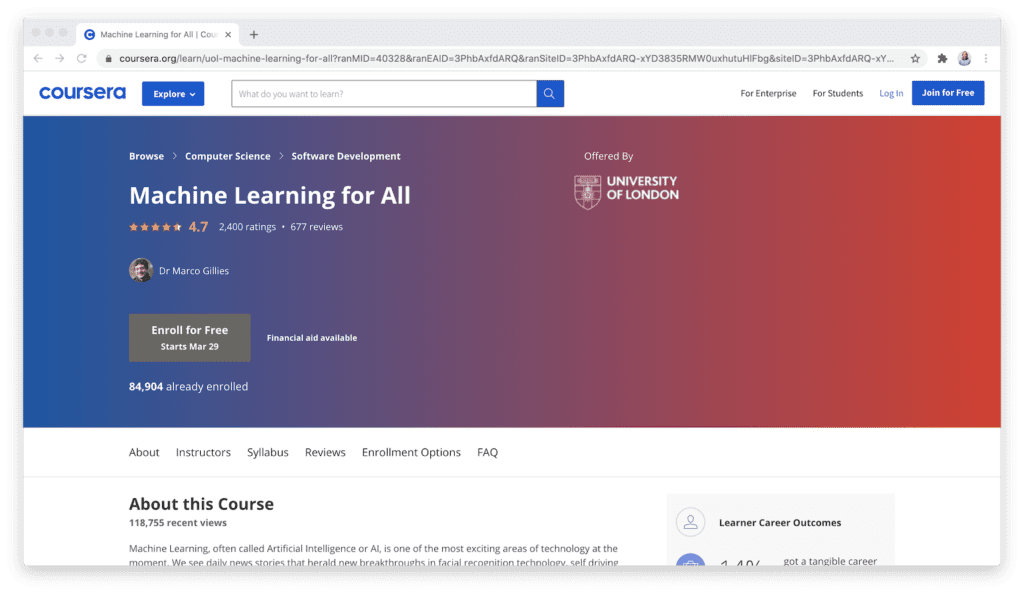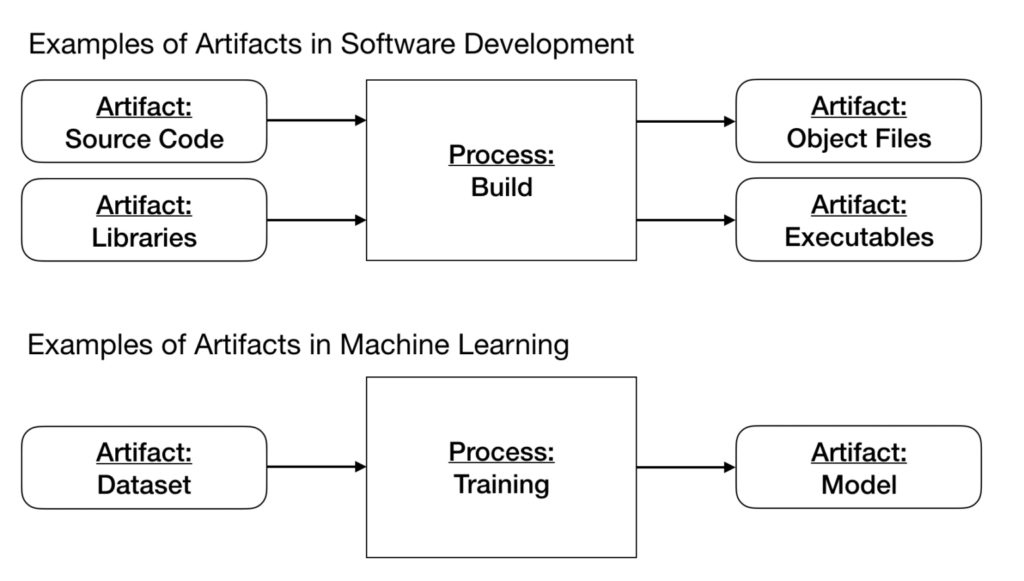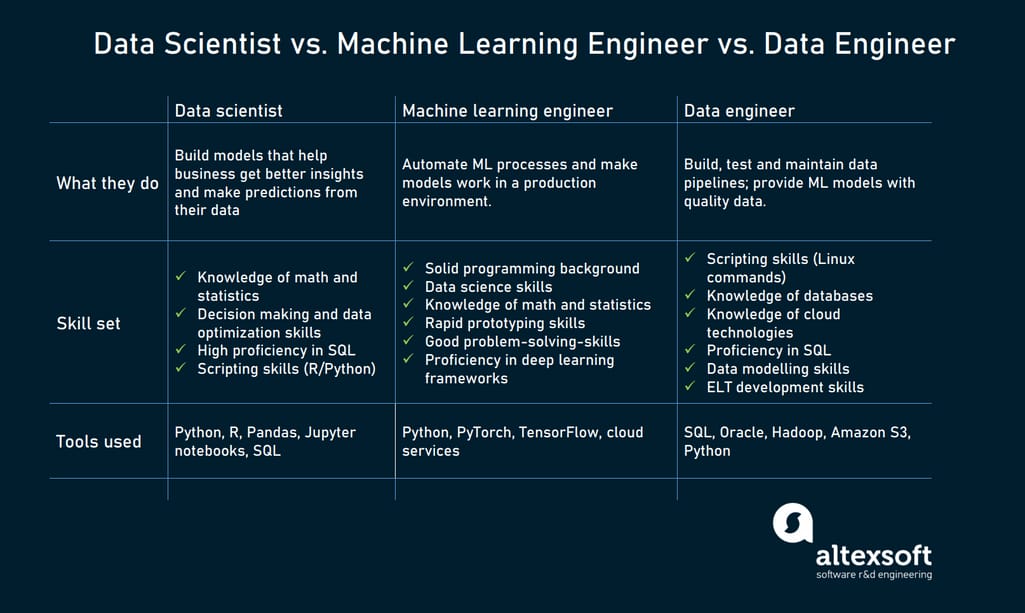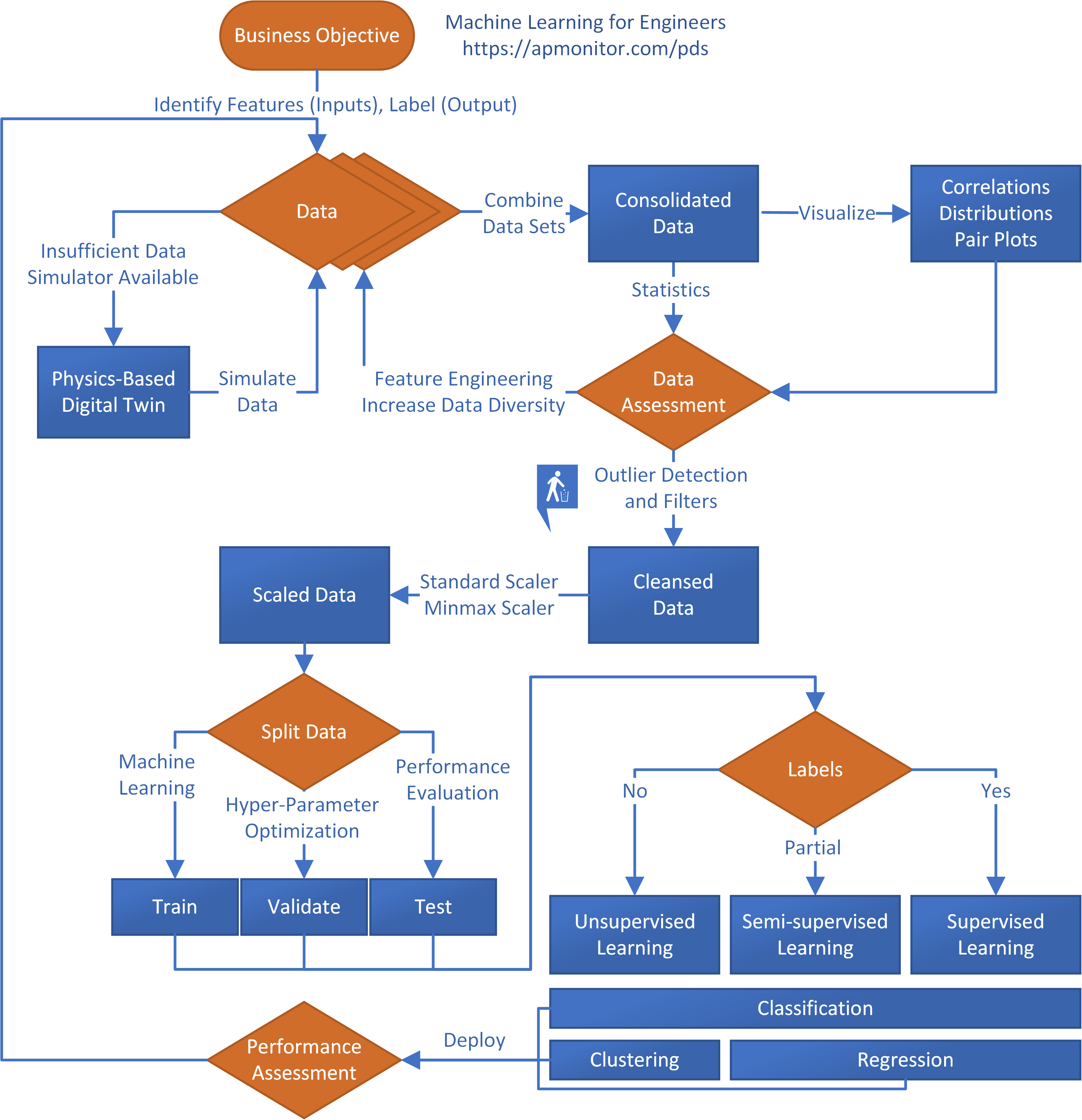All Categories
Featured
Table of Contents
- – The Facts About Generative Ai For Software Dev...
- – Little Known Facts About Software Engineering ...
- – More About Best Online Machine Learning Cours...
- – An Unbiased View of Fundamentals To Become A ...
- – All About Aws Machine Learning Engineer Nano...
- – Little Known Questions About Aws Certified M...
- – The Basic Principles Of Machine Learning Boo...
Some people believe that that's disloyalty. Well, that's my whole career. If someone else did it, I'm going to use what that individual did. The lesson is placing that aside. I'm forcing myself to analyze the possible remedies. It's even more concerning eating the web content and trying to use those concepts and less about discovering a library that does the work or finding someone else that coded it.
Dig a little bit deeper in the mathematics at the beginning, simply so I can build that structure. Santiago: Lastly, lesson number seven. I do not think that you have to understand the nuts and bolts of every algorithm prior to you utilize it.
I've been utilizing neural networks for the longest time. I do have a sense of how the slope descent functions. I can not explain it to you right now. I would need to go and check back to really obtain a much better instinct. That doesn't suggest that I can not solve points making use of semantic networks, right? (29:05) Santiago: Trying to require individuals to assume "Well, you're not mosting likely to be effective unless you can describe every information of how this works." It returns to our sorting example I believe that's simply bullshit advice.
As an engineer, I've worked on many, numerous systems and I have actually used many, many things that I do not recognize the nuts and bolts of how it functions, despite the fact that I comprehend the influence that they have. That's the final lesson on that particular thread. Alexey: The funny thing is when I consider all these collections like Scikit-Learn the algorithms they make use of inside to implement, as an example, logistic regression or something else, are not the like the formulas we study in machine understanding courses.
The Facts About Generative Ai For Software Development Revealed
Even if we tried to find out to obtain all these fundamentals of equipment discovering, at the end, the formulas that these libraries utilize are different. Santiago: Yeah, definitely. I assume we require a whole lot extra pragmatism in the industry.

By the means, there are two various paths. I typically talk to those that wish to operate in the sector that wish to have their effect there. There is a course for researchers and that is completely different. I do not attempt to speak about that due to the fact that I don't recognize.
Right there outside, in the market, materialism goes a long means for sure. (32:13) Alexey: We had a remark that said "Feels even more like motivational speech than talking about transitioning." So possibly we should switch. (32:40) Santiago: There you go, yeah. (32:48) Alexey: It is an excellent inspirational speech.
Little Known Facts About Software Engineering Vs Machine Learning (Updated For ....
One of the things I wanted to ask you. First, let's cover a couple of points. Alexey: Let's start with core tools and structures that you need to discover to in fact shift.
I understand Java. I recognize how to utilize Git. Perhaps I understand Docker.
What are the core tools and frameworks that I require to learn to do this? (33:10) Santiago: Yeah, absolutely. Fantastic question. I assume, primary, you must start discovering a little bit of Python. Because you already know Java, I don't assume it's mosting likely to be a massive change for you.
Not since Python is the very same as Java, but in a week, you're gon na get a whole lot of the distinctions there. Santiago: Then you get specific core devices that are going to be used throughout your entire job.
More About Best Online Machine Learning Courses And Programs
That's a library on Pandas for data control. And Matplotlib and Seaborn and Plotly. Those three, or one of those 3, for charting and showing graphics. After that you get SciKit Learn for the collection of artificial intelligence formulas. Those are devices that you're mosting likely to have to be utilizing. I do not advise just going and discovering them unexpectedly.
Take one of those programs that are going to start introducing you to some issues and to some core ideas of device discovering. I do not bear in mind the name, but if you go to Kaggle, they have tutorials there for complimentary.
What's great about it is that the only demand for you is to recognize Python. They're going to provide a trouble and inform you just how to make use of decision trees to address that certain problem. I assume that procedure is very powerful, since you go from no device finding out history, to comprehending what the trouble is and why you can not resolve it with what you understand right now, which is straight software program engineering practices.
An Unbiased View of Fundamentals To Become A Machine Learning Engineer
On the various other hand, ML designers specialize in building and deploying machine knowing models. They concentrate on training designs with information to make forecasts or automate tasks. While there is overlap, AI designers manage even more varied AI applications, while ML designers have a narrower concentrate on artificial intelligence algorithms and their useful implementation.

Equipment discovering designers concentrate on creating and releasing maker understanding versions into manufacturing systems. They service engineering, guaranteeing designs are scalable, reliable, and incorporated into applications. On the other hand, data researchers have a more comprehensive duty that includes information collection, cleaning, expedition, and structure versions. They are often liable for removing understandings and making data-driven choices.
As companies increasingly adopt AI and maker understanding technologies, the demand for competent professionals grows. Artificial intelligence designers deal with advanced tasks, contribute to innovation, and have affordable salaries. However, success in this field calls for continuous understanding and staying on par with advancing technologies and techniques. Equipment knowing functions are usually well-paid, with the capacity for high gaining possibility.
ML is essentially various from conventional software program development as it concentrates on mentor computers to find out from data, instead of shows specific guidelines that are implemented systematically. Uncertainty of outcomes: You are possibly utilized to writing code with foreseeable outcomes, whether your feature runs when or a thousand times. In ML, nonetheless, the outcomes are much less particular.

Pre-training and fine-tuning: Just how these models are trained on large datasets and after that fine-tuned for certain tasks. Applications of LLMs: Such as message generation, belief analysis and info search and retrieval. Documents like "Attention is All You Need" by Vaswani et al., which presented transformers. Online tutorials and courses concentrating on NLP and transformers, such as the Hugging Face program on transformers.
All About Aws Machine Learning Engineer Nanodegree
The capability to take care of codebases, combine adjustments, and deal with disputes is equally as essential in ML growth as it is in conventional software program tasks. The skills created in debugging and testing software application applications are very transferable. While the context might transform from debugging application reasoning to recognizing concerns in data processing or design training the underlying principles of systematic investigation, hypothesis testing, and iterative improvement are the same.
Artificial intelligence, at its core, is heavily dependent on stats and chance concept. These are critical for understanding how algorithms gain from data, make forecasts, and assess their efficiency. You should consider coming to be comfortable with principles like analytical value, circulations, hypothesis screening, and Bayesian reasoning in order to layout and analyze versions properly.
For those curious about LLMs, a comprehensive understanding of deep discovering designs is beneficial. This includes not just the auto mechanics of semantic networks but additionally the design of specific versions for different use cases, like CNNs (Convolutional Neural Networks) for image handling and RNNs (Frequent Neural Networks) and transformers for consecutive data and natural language processing.
You ought to know these concerns and learn methods for recognizing, reducing, and connecting regarding bias in ML versions. This includes the possible impact of automated decisions and the moral implications. Many models, specifically LLMs, require considerable computational resources that are frequently provided by cloud platforms like AWS, Google Cloud, and Azure.
Structure these skills will not only facilitate a successful change into ML yet also make sure that programmers can add effectively and responsibly to the development of this dynamic field. Concept is important, however absolutely nothing beats hands-on experience. Begin working with tasks that enable you to apply what you've discovered in a practical context.
Develop your projects: Beginning with straightforward applications, such as a chatbot or a message summarization tool, and slowly increase complexity. The area of ML and LLMs is rapidly developing, with new advancements and modern technologies emerging routinely.
Little Known Questions About Aws Certified Machine Learning Engineer – Associate.
Contribute to open-source projects or create blog messages regarding your discovering trip and tasks. As you obtain proficiency, start looking for opportunities to incorporate ML and LLMs into your work, or look for new duties focused on these modern technologies.

Vectors, matrices, and their function in ML formulas. Terms like version, dataset, functions, labels, training, reasoning, and recognition. Information collection, preprocessing methods, version training, assessment procedures, and deployment factors to consider.
Choice Trees and Random Forests: Instinctive and interpretable designs. Assistance Vector Machines: Optimum margin category. Matching issue types with proper models. Stabilizing performance and complexity. Fundamental framework of neural networks: nerve cells, layers, activation functions. Layered computation and ahead propagation. Feedforward Networks, Convolutional Neural Networks (CNNs), Reoccurring Neural Networks (RNNs). Photo recognition, series prediction, and time-series analysis.
Information circulation, transformation, and function design strategies. Scalability principles and efficiency optimization. API-driven techniques and microservices assimilation. Latency management, scalability, and variation control. Constant Integration/Continuous Implementation (CI/CD) for ML operations. Version monitoring, versioning, and efficiency tracking. Spotting and addressing changes in design efficiency with time. Dealing with performance traffic jams and source administration.
The Basic Principles Of Machine Learning Bootcamp: Build An Ml Portfolio

Course OverviewMachine learning is the future for the future generation of software program professionals. This program works as a guide to maker understanding for software engineers. You'll be introduced to 3 of one of the most pertinent components of the AI/ML technique; supervised understanding, neural networks, and deep discovering. You'll understand the differences in between conventional shows and maker knowing by hands-on growth in monitored discovering prior to constructing out complex dispersed applications with neural networks.
This training course works as an overview to machine lear ... Program A lot more.
Table of Contents
- – The Facts About Generative Ai For Software Dev...
- – Little Known Facts About Software Engineering ...
- – More About Best Online Machine Learning Cours...
- – An Unbiased View of Fundamentals To Become A ...
- – All About Aws Machine Learning Engineer Nano...
- – Little Known Questions About Aws Certified M...
- – The Basic Principles Of Machine Learning Boo...
Latest Posts
Full Guide: How To Prepare For A Technical Coding Interview
Best Resources To Practice Software Engineer Interview Questions
Software Engineer Interviews: Everything You Need To Know To Succeed
More
Latest Posts
Full Guide: How To Prepare For A Technical Coding Interview
Best Resources To Practice Software Engineer Interview Questions
Software Engineer Interviews: Everything You Need To Know To Succeed